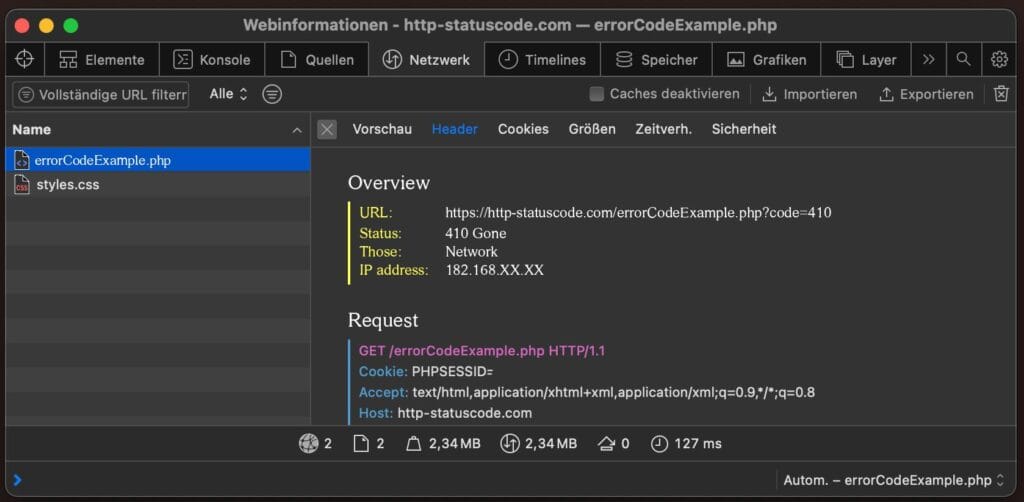
You click on a link and instead of the expected page, you get an error message: 410 Gone. No redirect, no "page not found" like a 404. Just: this no longer exists. And that's not a mistake, the server is letting you know that this page has been deliberately and permanently deleted.
So a 410 status code means: what you're trying to retrieve is definitely gone. It was once here, but now it's really gone. And that's exactly the point.
How is 410 different from 404?
A 404 suggests that the page maybe is still coming back. It is vague. The path does not exist, but whether that is temporary or permanent? The server does not comment on that.
A 410 status code is exact: there was something here, and it was deliberately removed. That clarity makes all the difference, especially to crawlers.
Search engines treat an http 410 differently from a 404. They often leave a 404 in the index for a while. A 410? That one leads to deletion faster. The message is clear: This URL no longer belongs to the site.
When do you use a 410 gone?
You deploy a 410 when a page or resource has not only disappeared, but will not return. This can be useful for:
- Temporary campaigns completed
- Downloads that may no longer be available
- Old user accounts that have been structurally deleted
- Content that you deliberately want removed from the index
A 410 http state is especially appropriate for situations where you don't have a successor or alternative. You don't want to redirect, you want to clean.
How do you recognize a 410?

In the browser, you usually see no more than, "410 Gone." Technical tools show it more accurately.
In your terminal, execute:
curl -I https://voorbeeld.nl/oud-artikel
You get back:
HTTP/1.1 410 Gone
Crawlers such as Screaming Frog pick up 410s well. In the "Response Codes" tab, you can filter by 4xx codes and see which URLs are marked as permanently deleted.
For larger sites, this is useful when checking cleanup actions or checking legacy URLs that no longer serve content.
How do you set up a 410?
Most servers support direct configuration of 410 status codes.
For Apache, for example, via .htaccess:
Redirect gone /expired-page
In Nginx via:
location /expired-page {
return 410;
}
Are you using a CMS or framework? Many systems let you return a 410 response via route controllers or specific middleware. In WordPress, you can control it through a plugin like Redirection, or directly in PHP via status_header(410).
What does a 410 do to your SEO?
For search engines, the instruction is clear. With an http 410, the crawler knows it can forget about this URL. This speeds up de-indexing and prevents bots from continuing to return to something that is no longer there.
Unlike a 404, which Google continues to check for a while, a 410 is the signal to clean up.
Note: incorrect use of 410s can lead to loss of valuable pages. Use it only if you are sure the URL may, and will, go away.
In conclusion
A 410 status code is not the end by error, but the end by choice. You are telling both the server and the world, "something was here, but that is past."
Thus, the 410 gone is not a technical error, but a substantive decision. One you should only make if you mean it. Because a 410 doesn't just say "gone;" it also says, "and it will stay that way.